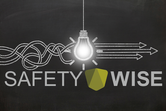Let's Talk About Risk!

This week I posted a couple of videos and a short post regarding risk and management. The links to these are: Discussion Video, Short Post and Promo Video.
The reality is, we're surrounded by hazards. Every day we make decisions, often with no real thought, that could impact us. If we look at the work front, there are many forms of risk management tools and processes from Take 5's, HAZOP's, Hierarchy of Controls, Bowties, and others. And in principle, they all have their place, depending on circumstances and the work situation.
However, there's a flaw with all of them- you don't know what you don't know.
By this, I mean, if you don't recognise something as a hazard or understand the risk, how will you assess it and control it effectively?
We see it almost daily on the worksite and repeatedly in social media- people undertake so many tasks in an unsafe manner, however, I've always been curious as to why?
Why do they do it?
Do they not see what they're doing as unsafe?
Are there conflicting demands on them?
Is there a training issue?
Is there a supervision issue?
The reality is, there could be and often is a myriad of reasons!
Likewise, we need to help people understand the limitations of the Hierarchy of Controls. By that, I mean that we need to educate people to realise that some control measures may address the original hazard, however they can create other hazards that may, in fact, be a higher risk.
We can't implement a control measure in isolation. We need to ensure it addresses the original hazard effectively (lowers the risk) and that it doesn't create others.
We also need to consider potential byproducts of that control measure. For example, just because we have line-markings or traffic cones "separating" traffic from pedestrians, it doesn't eliminate the chance of being struck by a vehicle, nor does it mean we don't need situational awareness whilst working in that environment.
As safety professionals, our role is to educate and help people understand how to identify, assess and control hazards and risk. I've argued many times, that we can't be everything to everyone. We can't possibly know every single task that's being undertaken in our workplace, and we most certainly can't know every single hazard associated with that task.
But we can have meaningful and two-way conversations with people. We can facilitate discussions. We can research. We can help people to understand.
What do you do to help others manage hazards and risks in your workplace?
Interested in Knowing More?
Further information on Safety Wise’s Incident Cause Analysis (ICAM) Training is available from our website: http://www.safetywise.com/
Additional ICAM Related Services
Safety Wise also offers the following additional services for sites that adopt the ICAM investigation analysis method:
Quality review of incident investigations using ICAM
Participation in investigations as an external/independent party
Investigation coaching

ABOUT THE AUTHOR- Luke Dam (Chief Executive Officer)
Luke has worked in various industries over the years including pharmaceutical, retail, manufacturing, and transport including iconic brands like WesFarmers, Goodyear, CSL Limited, and Incitec Pivot Limited.
His work in OHS and learning and development has seen him deliver services to clients, both internal and external as well as managing service delivery teams around the world.
Luke holds a Graduate Certificate of Management (Learning) as well as a Diploma of Occupational Health and Safety, a Diploma of Training and Assessment Systems, a Certificate IV Workplace Training and Assessment, a Certificate III in Mine Emergency Response & Rescue and a Certificate II in Public Safety (SES Rescue).
Luke is extensively involved in a project to establish an association dedicated to confined space safety and to drive change in legislation to promote best-practice in this high-risk area. Luke is passionate about online OHS and incident investigation communities, moderating a number of large LinkedIn groups boasting over 11,000 members globally.





Comments